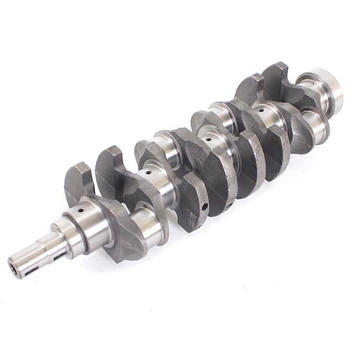Introduction: The Unseen Symphony of Engine Performance
When it comes to automotive engineering, the crankshaft plays a crucial role in converting linear piston motion into rotational energy. But there's more to this critical component than meets the eye. In truth, crankshaft design heavily influences engine NVH (Noise, Vibration, and Harshness) characteristics. So, let's dive into this intriguing relationship.
What Are Engine NVH Characteristics?
NVH characteristics describe the noise and vibration qualities perceived by vehicle occupants. Engineers strive to minimize NVH levels to improve passenger comfort and overall vehicle performance. Interestingly enough, crankshaft design can significantly impact these qualities.
Crankshaft Dynamics and Vibration
The crankshaft's dynamic behavior is closely tied to engine vibrations. Factors like mass distribution, stiffness, and imbalance contribute to these vibrations. To reduce NVH levels, engineers focus on optimizing crankshaft geometry and materials to minimize dynamic forces and maintain balance.
The Role of Crankshaft Mass Distribution
Have you ever wondered how crankshaft mass distribution affects engine NVH? As it turns out, uneven mass distribution can lead to excessive vibrations. By carefully designing the crankshaft's counterweights and webs, engineers can redistribute mass for better balance and minimize NVH levels.
Balancing Act: Reducing Vibrations
Crankshaft balancing is essential for reducing vibrations. Engineers use various techniques, including static and dynamic balancing, to ensure the crankshaft rotates smoothly. This process helps minimize engine NVH, promoting a quieter and more comfortable ride.
Material Selection and Its Impact on NVH
Choosing the right crankshaft material can significantly impact engine NVH characteristics. Materials with higher damping capacities, like cast iron or forged steel, help absorb vibrations. On the other hand, lighter materials, such as aluminum or composite alloys, contribute to reduced weight and improved fuel efficiency.
Striking the Perfect Balance
Selecting the ideal crankshaft material often involves finding a compromise between weight, stiffness, and damping. Engineers must consider factors like cost, manufacturing processes, and durability to make informed material choices.
Practical Applications: Improving Engine NVH
Now that we understand the relationship between crankshaft design and engine NVH characteristics, let's explore some practical approaches for optimizing performance:
Conclusion: The Art of Crankshaft Design
In conclusion, crankshaft design significantly influences engine NVH characteristics. By understanding the intricate relationship between mass distribution, materials, and dynamic behavior, engineers can create crankshafts that minimize noise and vibrations, ultimately enhancing vehicle performance and passenger comfort. So, the next time you're behind the wheel, take a moment to appreciate the artful engineering hidden beneath the hood.




